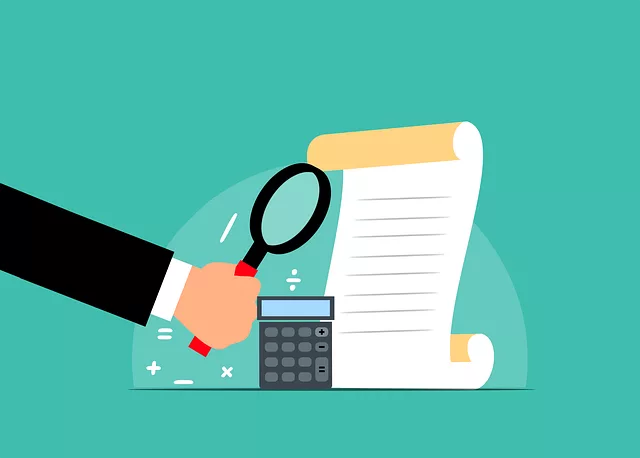Vendor compliance assessments, focusing on workplace safety compliance audits, occupational health reviews, and regulatory adherence, are critical for businesses to ensure supplier safety standards. These in-depth audits scrutinize policies, procedures, and practices, identifying risks and non-compliance. Regular, comprehensive audits promote accountability, foster continuous improvement, and enhance partnerships based on shared responsibility for workplace safety and regulatory compliance. Integrating these strategies optimizes the supply chain's safety, mitigates legal exposure, and safeguards employees' well-being.
Vendor compliance assessments are crucial for ensuring operational integrity and legal adherence across supply chains. This comprehensive guide delves into the intricate world of vendor compliance, exploring key components such as workplace safety and occupational health audits, regulatory compliance assessments, and effective implementation strategies. Understanding these elements is vital for businesses aiming to mitigate risks, enhance transparency, and foster strong vendor relationships in today’s competitive market.
- Understanding Vendor Compliance Assessments: A Comprehensive Overview
- The Role of Workplace Safety and Occupational Health Audits
- Regulatory Compliance: Assessing Vendors Against Legal Standards
- Strategies for Effective Vendor Compliance Assessment Implementation
Understanding Vendor Compliance Assessments: A Comprehensive Overview
Vendor compliance assessments are a critical process for any business to ensure their suppliers and partners adhere to relevant workplace safety and health standards. These assessments go beyond simple audits, encompassing a thorough review of policies, procedures, and operational practices within a vendor’s organization. By conducting comprehensive occupational health audits, businesses can identify potential risks and non-compliance with regulatory requirements, ensuring the well-being of workers at external sites.
This process involves evaluating various aspects, including safety equipment provisions, hazard communication, employee training records, and implementation of control measures. Effective vendor compliance assessments help establish a culture of accountability and continuous improvement, fostering partnerships built on shared responsibilities for workplace safety and regulatory compliance.
The Role of Workplace Safety and Occupational Health Audits
Workplace safety and occupational health audits play a pivotal role in vendor compliance assessments. These comprehensive reviews go beyond mere paper inspection; they involve hands-on observation and analysis of a vendor’s operational practices, equipment, and facilities. By focusing on aspects like worker training, protective gear use, ergonomics, and exposure to hazardous materials, these audits ensure that vendors adhere to stringent industry standards and regulatory requirements.
Occupational health audits, in particular, delve into the overall wellness of workers, including mental health and stress management. They assess whether a vendor’s workplace culture fosters a safe and healthy environment, promotes fair labor practices, and complies with relevant laws and regulations. Regularly scheduled audits not only help identify non-conformities but also serve as powerful deterrents for potential safety hazards, ultimately contributing to a safer supply chain.
Regulatory Compliance: Assessing Vendors Against Legal Standards
Regulatory compliance is a critical aspect of vendor assessment, especially in industries with stringent legal standards. These include workplace safety and occupational health regulations designed to protect employees and ensure a secure working environment. Companies must carefully evaluate their vendors’ adherence to these laws and guidelines to mitigate risks and maintain compliance.
Comprehensive workplace safety compliance audits and occupational health assessments are essential tools for achieving this. They involve meticulous reviews of vendor operations, practices, and documentation to identify potential non-compliance areas. By integrating these audits into the vendor selection process, businesses can ensure that their partners meet the required standards, thereby reducing legal exposure and fostering a culture of safety and responsibility throughout the supply chain.
Strategies for Effective Vendor Compliance Assessment Implementation
Implementing effective vendor compliance assessment strategies is key to ensuring a safe and healthy workplace environment. Start by conducting comprehensive workplace safety compliance audits that cover all relevant regulatory standards and guidelines. These audits should be regular and surprise checks to deter any negligence or non-compliance. Include both occupational health audits and regulatory compliance assessments as part of your audit process, focusing on areas like hazard identification, risk assessment, and control measures.
To optimize the assessment process, leverage technology for efficient data collection and analysis. Utilize digital platforms to document findings, track progress, and share insights with vendors promptly. Additionally, foster open communication channels with vendors, encouraging them to proactively address any identified non-compliance issues. Regular training sessions on compliance requirements can empower both your internal teams and vendor partners, leading to better adherence to safety and health standards.

